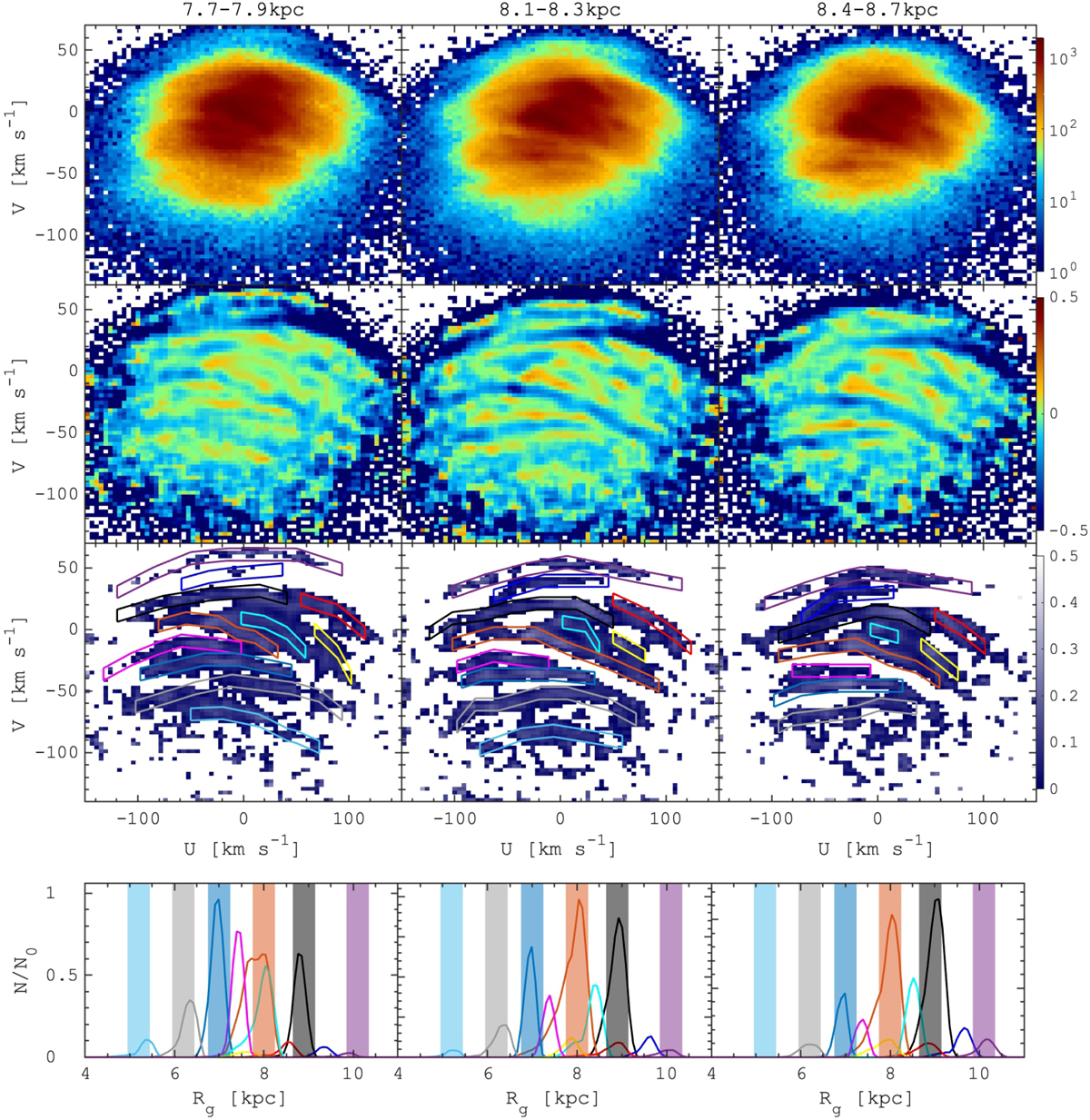Fig. 9.

Download original image
Matching local vR-vϕ features in the SNd with large-scale stellar overdensities in the guiding space of the MW. First row: number density of stars in kinematic vR-vϕ space for the G3RV2 stars selected in three regions along the galactocentric radius: R = 7.8 kpc (left), R = 8.2 kpc (centre), R = 8.55 kpc (right). Colour depicts the number of stars in log-scale. Second row: unsharp-masking maps (see Eq. (2)) for corresponding density distributions. Third row: positive part of the unsharp-masking maps (overdensities), where coloured boxes highlight different isolated kinematic overdensities. Forth row: number of stars from each vR-vϕ plane selected feature as a function of their angular momentum (or guiding radius). Coloured boxes depict the angular momentum selections used in (Xg,Yg) coordinates to identify the main spiral arms of the MW, which coincide with known star-forming regions, and the bar resonances from Khoperskov et al. (2020a). In particular, the Arcturus stream (light blue) is a low-velocity tail of the Scutum-Centaurus spiral arm; part of the Hercules stream (grey) corresponds to the bar corotation, while its top part is likely to be the Sagittarius arm (blue); the Sirius stream represents the bar OLR (black); and the Hat is likely the high-velocity tail of the Perseus arm (purple).
Current usage metrics show cumulative count of Article Views (full-text article views including HTML views, PDF and ePub downloads, according to the available data) and Abstracts Views on Vision4Press platform.
Data correspond to usage on the plateform after 2015. The current usage metrics is available 48-96 hours after online publication and is updated daily on week days.
Initial download of the metrics may take a while.


